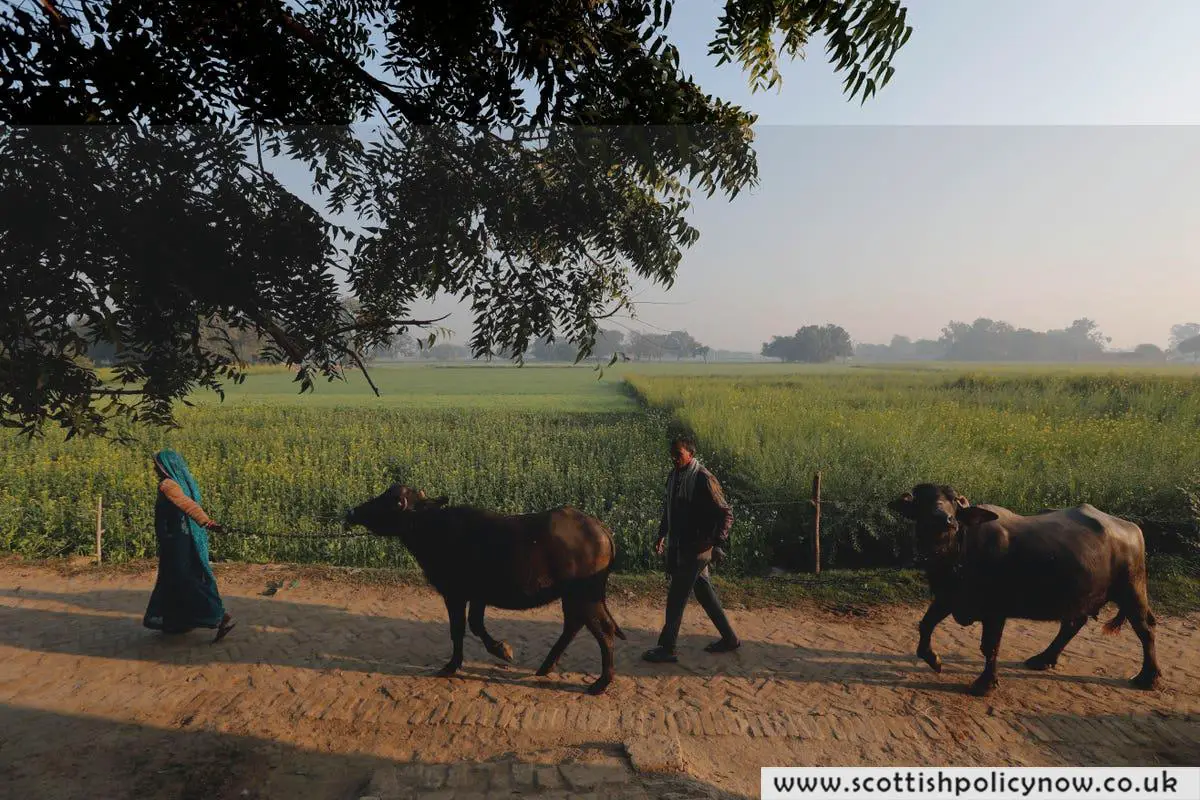Abinaya Tamilarasu, who got a commerce degree from a local institute, much rather spends her days with the four cows that’s as good as family, milking and looking after the farmstead.
“Letting go of farming ain’t an option for our family; it’s more than just a job,” the 28-year-old, residing on her ancestral land in Tamil Nadu, India, admits. Even though she could be earning more elsewhere, she’s content with “the happiness our cows bring us.”
India tops the global charts in milk production, with a dairy farmer count hitting 80 million who churned out 231 million tons of the white beverage last year. For many like Tamilarasu, owning just a handful of cows, their collective count has swollen to 303 million bovine, which includes cows and buffaloes, thrusting India into the spotlight as a leading source of methane emissions contributing to global warming. The central government has made strides in methane reduction but emphasizes other areas, such as renewable energy transition, claiming that methane is mostly an unavoidable byproduct of dairy farming. However, experts argue that the industry could cut down on emissions more effectively to curb warming on a short-term basis.

India, according to the latest data from the International Energy Agency, ranks as the third-highest methane emitter globally, with livestock accounting for nearly half of the country’s methane emissions, predominantly from cattle. Methane, notably more potent than CO2, can trap significantly more heat in the atmosphere over a shorter period.
Despite the potential for quick climate wins through methane mitigation, India hasn’t signed up for any global methane pledges. Methane’s lifespan in the atmosphere is roughly a dozen years, unlike CO2, which persists for centuries.
Nationally, attempts to reduce methane in agriculture are underway, like the National Dairy Development Board’s (NDDB) initiatives working with over 17 million farmers. They’re exploring genetic improvement and better feed, which could lead to fewer cows needed for the same milk yield. The NDDB has found that a balanced diet can cut emissions from cattle by up to 15%.
The NDDB is also tackling crop burning, a practice that contributes heavily to emissions, by proposing that the crop residue be used as cattle feed instead.
“Adopting climate-smart dairy practices is crucial,” says NDDB chairman Meenesh Shah.
Vineet Kumar of the Centre for Science and Environment in New Delhi concurs that better feed quality could lower methane release. Promoting local breeds that emit less is another avenue. “These measures could benefit all involved,” he suggests.
Yet, as Thanammal Ravichandran, a vet in Coimbatore, points out, feed scarcity in India means farmers often resort to giving cattle lower quality, more emitting feed.
“Farmers struggle to invest in quality feed,” she says, calling for more government backing to make higher-grade feed more accessible and affordable.
Any strategies aimed at cutting methane must consider the impact on farmer livelihoods and traditional livestock rearing practices.
“Livestock is embedded in Indian farming culture,” Kumar explains, meaning drastic changes could disrupt farmers’ lives significantly. Also, cow dung as manure is vital to avoid nitrous oxide emissions from chemical fertilizers, a greenhouse gas even more potent than methane.
However, Bandish Patel, an energy analyst at climate think tank Ember, points out that the energy sector might offer clearer methane reduction targets.
“Agricultural emissions are widespread, but you can pinpoint reductions in methane from oil, gas, and coal mining,” Patel says.
Shah from NDDB notes that India’s high agricultural emissions should be viewed against the backdrop of its large cattle population and status as a top milk and rice producer; the latter also emits methane.
“In this context, India’s agriculture sector emissions are relatively low,” Shah argues. India’s per capita emissions are below global averages due to its sizable population.
For dairy farmers like Tamilarasu, initiatives for better cow welfare and farming practices are welcome, but leaving dairy farming isn’t on her horizon.
“Our cows and us, we support one another. Improving their lives is bound to improve ours,” she concludes.








